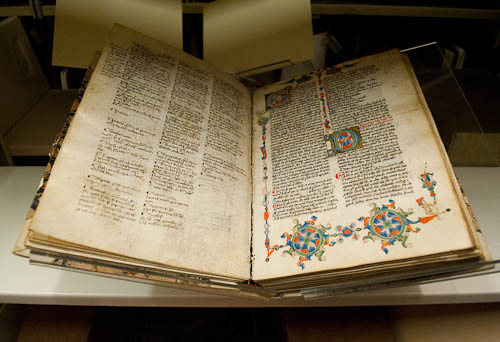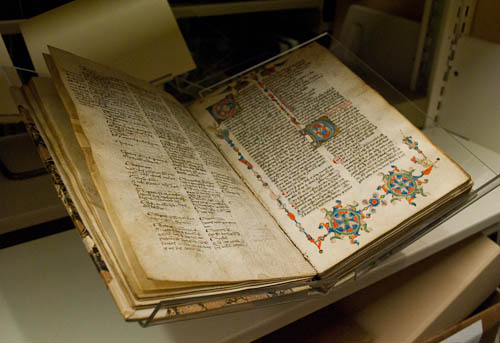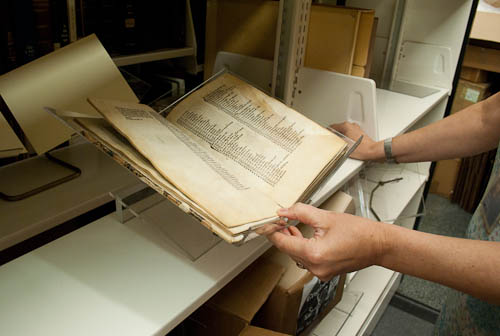Our oldest bound volume in the Smithsonian Libraries is from circa 1280. It gives me a thrill every day that I can actually take off the shelf and hold in my hand a 730 year-old book! The text of the codex is in meticulous fine lettering in Latin, hand-writing of course, on smooth parchment, De proprietatibus rerum. Page to page one can see the beautifully even layout, the red and blue markings for the end of the paragraphs and the occasionally occurring multicolored big initial letters. The first section of the book is a very detailed index making it possible for the reader to find certain names and topics in the volume.
The index is followed by the first text page which usually takes the viewers’ breath away. On the margins and within the large initial letters brilliant little illuminations appear: ornamental decoration, small figures, garlands, flowers and plants. All the vivid colors, including gold, have taken the test of times very well. Did the medieval artist know the content of the book? Can we draw conclusions from the decoration regarding what the text is about? Probably not; however, there is a delightful harmony between this first decorated page and the following literary work.
That is because the book is actually a compendium of things in nature, written by Bartholomaeus Anglicus, the 13th century famously knowledgeable Franciscan monk. The title is The properties of things. This does not give us much concrete information about content. On further examination it turns out that this very general title covers a work that best could be described as an encyclopedia. The subjects are early science and medicine, natural philosophy, natural history, the nature of things in the world in general, explained by the knowledge and intellectual tools that were given in the 13th century.
The French great Encyclopedie comes to mind. That wonderful series of (in its first edition) 35 folio volume set also intended to compile the general knowledge of its age, but in the 18th century, in the age of the Enlightenment. The difference is striking: 35 huge volumes compared to the one much smaller one-volume Latin Bartholomaeus manuscript; but the intention was very similar. Both works are early predecessors of encyclopedias; of Wikipedia, if we wish to draw a modern parallel. My favorite of the three “Wikipedias,” however, is still the Smithsonian’s 730 year-old manuscript by Bartholomaeus.
— Lilla Vekerdy




2 Comments
Books like this can never be replaced by digital versions … they are infinitely valuable as Dinge an Sich, and not just for their contents. And some of these books are positively numinous. Looks like the De proprietatibus rerum is an example of that. 🙂
So fortunate to have this wonderful work of art at the Smithsonian. They will ensure its care so that generations in the future will be able to enjoy the breathtaking beauty of this book.